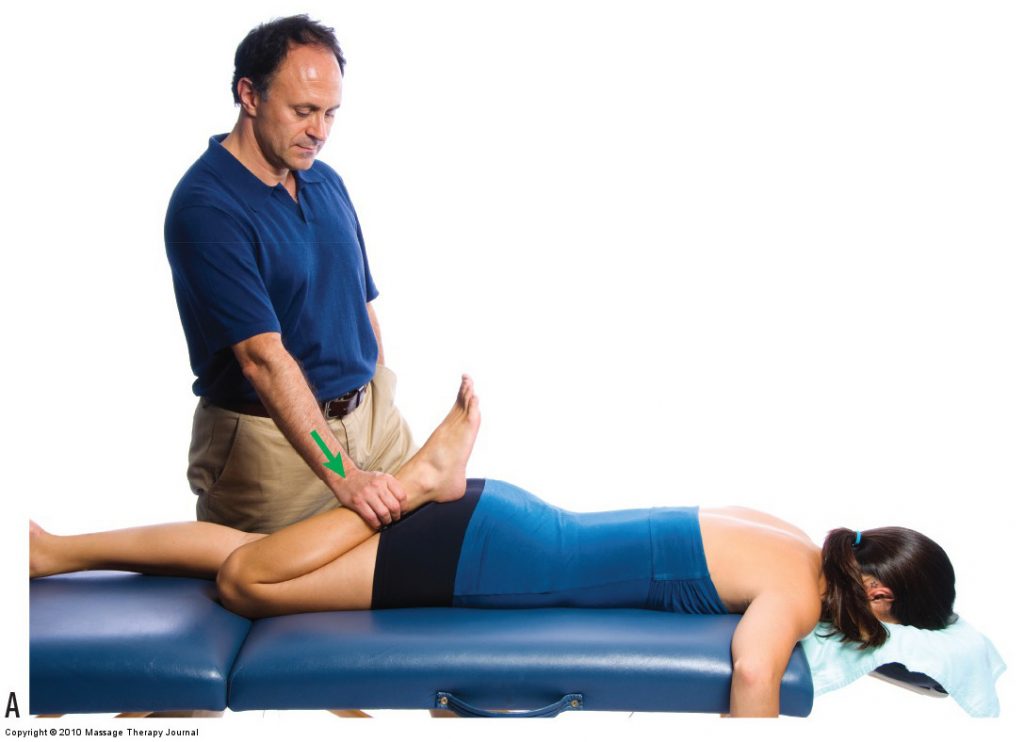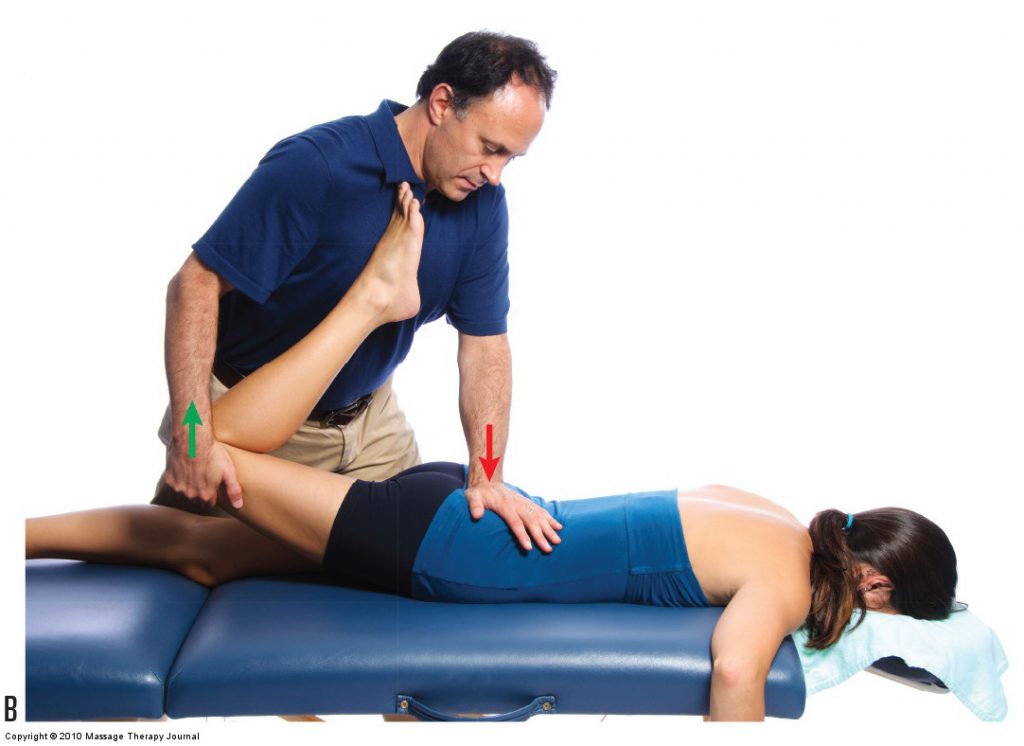This blog post article is part of a series of articles on assessment of the low back and pelvis. Scroll to the end of this article to see the others in this series.
Nachlas and Yeoman’s Tests
Nachlas’ test and Yeoman’s test both assess injury to the SIJ, primarily sprain and irritation/inflammation. These two tests are similar in that each one introduces a motion/torque into the SIJ of the prone client; if the joint is injured, this motion will stress the tissues and cause pain.


Figure 11. Nachlas and Yeoman’s tests for the SIJ. (A) Nachlas test is performed by bringing the client’s heel to the same-side buttock. (B) Yeoman’s test is performed by lifting the client’s thigh into extension with the knee joint flexed while stabilizing the same-side pelvic bone from lifting into the air and adding to the anterior tilt of the pelvic bone on that side of the body. Permission Joseph E. Muscolino. Manual Therapy for the Low Back and Pelvis – A Clinical Orthopedic Approach (2015)
Nachlas Test
Nachlas test is performed by passively flexing the client’s knee joint by bringing the client’s heel toward the same-side buttock (Fig. 11A). This causes a stretch of the quadriceps femoris muscles. Specifically, when the rectus femoris of the quadriceps is stretched, it is pulled taut, causing a pulling force to be placed on its attachments. This pulls on the anterior inferior iliac spine (AIIS), causing anterior tilt of the pelvic bone on that side. Because that pelvic bone moves and the other pelvic bone does not because it is stabilized against the table, motion is introduced into the SIJs. Usually, Nachlas test primarily assesses the same-side SIJ, but as explained in Therapist Tip 3.8, the opposite-side SIJ can be assessed as well.
Yeoman’s Test
Yeoman’s test works on a similar principle. It is performed by the therapist using one hand to lift the client’s thigh into extension, with the client’s knee joint partially flexed (Fig. 11B). The client’s rectus femoris, as well as all hip flexor musculature, is stretched, causing a force of anterior tilt on the client’s same-side pelvic bone. Because the other pelvic bone is stabilized against the table, the force is introduced into the SIJs. The therapist uses the other hand to press down on the client’s PSIS to both stabilize the pelvic bone on that side from lifting off the table and to increase the anterior tilt motion of that side pelvic bone.
Nachlas and Yeoman’s Tests Compared
Nachlas test causes only a mild stress to the SIJs, so it usually only shows positive if the SIJ injury is moderate or marked in degree. Yeoman’s test is more forceful and will show positive with a mild SIJ injury as well. One limitation to the Nachlas’ test is that because it requires maximal flexion of the client’s knee joint, it cannot be performed if the client has a unhealthy knee joint on that side that cannot tolerate full flexion.
This blog post article is the 14th in a series of 18 blog posts on the subject of assessment of the low back and pelvis.
The blog post articles in this series are:
- Introduction to Assessment of the Low Back and Pelvis
- Health History
- Introduction to Physical Assessment Examination of the Low Back and Pelvis
- Postural Assessment of the Low Back and Pelvis
- Range of Motion and Manual Resistance Assessment of the Low Back and Pelvis
- Muscle and Bone Palpation of the Low Back and Pelvis
- Joint Motion Palpation Assessment
- Overview of Special Orthopedic Assessment Tests of the Low Back and Pelvis
- Straight Leg Raise Tests for Space-Occupying Lesions
- Cough Test and Valsalva Maneuver
- Slump Test
- Piriformis Stretch Test
- Straight Leg Raise and Manual Resistance Tests for Strains and Sprains
- Nachlas and Yeoman’s Tests
- Sacroiliac Joint Medley of Tests
- Treatment Strategy for the Low Back and Pelvis
- Self-Care Advice for the Client with a Low Back / Sacro-Iliac Joint Condition
- Brief Review of Assessment and Treatment of Conditions of the Low Back and Pelvis


